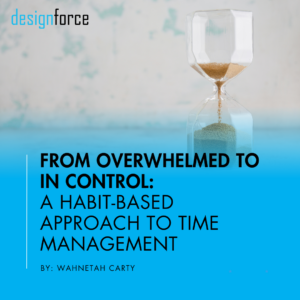Before You Dive In: 6 Crucial Factors to Weigh Before Embarking on a Design Career
By: Jason Gitlitz
Hey aspiring designers! So, you’re considering jumping headfirst into the design world? Love it. But before you strap on your drafting goggles and dive into design school, I want to shed light on some industry realities to ensure this is the right fit for you. These are all insights I wish I had access to before I took the plunge. Important: this is absolutely not meant to discourage – just to discuss some aspects of a design career that, in my experience, are less highlighted in school. The good news is that architects and interior designers report higher than average levels of satisfaction with their careers, so, if after reading these factors, and doing your research, your interest level is still high, it’s likely this is a career you’ll find great fulfillment and success in!
- Real World vs. School Projects: Before you commit to a career in design, let’s compare what you’ll learn in the classroom to what you’ll encounter in the professional world. In school, it’s all about honing your creative edge and focusing less on real-world constraints like budgets, schedules, and building codes. Design school challenges you to craft iconic, hyper-creative designs that not only push the boundaries but also ignite your creativity to its fullest potential. But once you step into the professional arena, more practical considerations become ever-present. Tight budgets, regulations, and client expectations (to name a few) vastly shape every project. It’s a shift from theory to reality that’s both challenging and rewarding. So, as you weigh your decision, remember, that architecture isn’t just about cool designs. It’s about staying passionate when faced with these practical challenges. Seek internships, engage with real-world cases, and connect with practicing architects to ensure your interest extends beyond creativity alone. By doing so, you’ll be ready to navigate the complexities of real-world architecture with confidence and enthusiasm.
- Mastering the Time Tango: Time management in the design industry is absolutely crucial for success. Understanding the time constraints of each project and maintaining a steady pace to meet deadlines is paramount. It is all too easy to try out idea after idea, as design is iterative by nature, but this can lead to missing deadlines or compromising other aspects of projects. Consider outlining your tasks day-by-day or even hour-by-hour to stay on track. Being smart about how you use your time becomes key. So, as you mull over the possibility of immersing yourself in the world of architecture and design, remember that effective time management isn’t just a skill, but a lifeline. It’s what keeps you on course amidst the whirlwind of creativity and deadlines, ensuring that your passion for design can flourish without being bogged down by the constraints of time.
- Navigating the Digital Landscape: Time to talk tech—it’s a game-changer in today’s architectural world. In the past, hand-drawn sketches may have been king, but now, modern architecture relies heavily on digital tools like Revit, Lumion, and Rhino. Working with these software, among others, is a non-negotiable for success. Additionally, making sure you stay in the know with cutting-edge technology in the industry will really make you shine and stand out to employers. But before fully committing to the digital frontier, take the time to explore. Dive into free trials, watch YouTube tutorials, and chat with industry professionals to get a feel for these tools. Ensure you’re genuinely drawn to working with them, and if so, learn to embrace these digital tools with enthusiasm. Building design software expertise early in your career will set you apart in a competitive job market and make you more efficient!
- Client Communication 101: Mastering the Art of Connection: As an architect or interior designer, communication isn’t just about showcasing your designs—it’s about understanding and adapting to your clients’ needs and preferences. Unlike other professions where one’s expertise may reign supreme, at the end of the day in design, the client calls the shots. Some clients entrust you with complete creative freedom, while others prefer to be deeply involved in the decision-making process. It’s essential to accept and embrace both dynamics. You have to practice active listening and empathy, paying close attention to their cues to discern their true desires. Building trust and rapport with your clients goes beyond just securing projects; it’s about nurturing enduring relationships. So, polish those communication skills, and prepare to impress your future clients with your ability to understand and cater to their unique vision and needs!
- Getting Down to Business: Now, let’s chat about the business side of the industry. Think budgets, contracts, project management – all the stuff that keeps the wheels turning in the world of architecture. Here’s the thing: as an architect or interior designer, you’ll wear many hats. While you can certainly specialize to a degree, there are certain tasks that come with the territory. Take the time to explore these aspects of the profession and see if they spark your curiosity. Maybe you find joy in the puzzle of budgeting, or you’re intrigued by the intricacies of contract negotiation. Whatever it is, finding aspects of the business side that resonate with you can make all the difference. It doesn’t need to be your main driver to enter the industry, but accepting, and even better, having a genuine interest in these aspects is vital. While it might not be as glamorous as designing soaring skyscrapers, building fluency in the business side of architecture is key for success in the long run.
- Money Matters: Navigating the Financial Side: Let’s talk about the realities of salaries in the design industry. Opportunities for creativity and fulfillment are endless, but it’s important to understand that starting salaries in the design industry may not rival those in other industries. However, with strategic positioning, hard work, and dedication, it’s entirely possible to achieve financial success over time. Researching starting salaries, career growth trajectories, and the impact of factors like location and specialization is crucial before making any decisions. By positioning yourself strategically and staying driven, you can carve out a rewarding and financially stable career in architecture or interior design. While it’s essential to pursue your passion, it’s equally important to be realistic and informed about the financial landscape of the industry.
By grasping these six key factors, you’ll find yourself better equipped to handle the twists and turns of a design career with confidence and ease. So, dust off your sketchbook, gear up for the adventure, and let’s dive into the exciting process of bringing your ideas to life, one blueprint at a time!

Related Posts
Let's learn together.
Stay inspired and in the know on all things A|E|C.
Sign up for our monthly newsletter.










